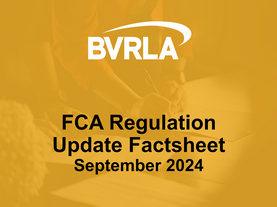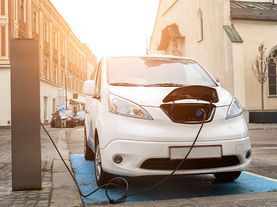What happens if no deal is agreed between the UK and the EU?
In the event of the UK leaving the EU without a deal, there are several possible measures the government could introduce to stimulate demand in the fleet sector in addition to maintaining the supply of vehicles:
- Tariffs
The UK would introduce its own tariff schedule, based on WTO rules. Tariffs on finished vehicles or spare parts would negatively impact the price of vehicles our members and their customers purchase. These are 10 per cent on cars and 4.5 per cent on components. In March, the government said that car makers relying on EU supply chains would not face additional tariffs on car parts imported from the EU to prevent disruption to supply chains. The automotive sector would be particularly vulnerable from price rises due to new UK tariffs. The UK exports 56% of vehicles it produces to the EU and 70% of vehicles sold in the UK are EU imports. The SMMT believes a No Deal would see an average price rise of £1,500 - £1,800 on a vehicle with the cost being passed onto consumers. A slowdown in vehicle supply or negative impact on the supply of parts could impact vehicle repairs and insurers handling claims, due to the knock-on impact on credit hire/repair claims. It is possible there could be a negative impact on independent garages/body shops if they cannot cope with cash flow disruption.
- Employment and skills
The automotive sector depends on EU citizens to provide services to UK consumers, which in turn aids competitiveness. The Government has recently reaffirmed that EU nationals will still be able to come to the UK in a No Deal scenario. After Brexit, EU citizens who move to the UK will be able to apply for a 36 month temporary immigration status - European Temporary Leave to Remain (Euro TLR).
Applications to the new Euro TLR scheme will be simple and free and will be made after arrival in the UK. There will be no need for EU citizens travelling to the UK after Brexit to make any special arrangements in advance. There will be some visible changes at the UK border, and tougher rules for criminals but otherwise EU citizens will be able to cross the UK border as now.
EU citizens who move to the UK after Brexit and who do not apply for Euro TLR will need to leave the UK by 31 December 2020 unless they have applied for and obtained a UK immigration status under the UK’s new points-based immigration system.
An EU national that has lived in the UK before 1 November 2019 will be able to apply for ‘settled’ or ‘pre-settled’ status, depending on how long they have lived continuously in the UK. This will enable them to live in the UK after 31 December 2020.
- Vehicle supply/EU emissions target
There are already concerns over supply of BEVs and PHEVs in the EU market. The UK is currently the third largest market in the EU for electric vehicles. A national quota on electric vehicles is not the solution, but government needs to use existing regulatory and policy tools to ensure sufficient incentives for carmakers to sell ULEVs in the UK in the event of a No Deal.
It is not clear in a No Deal that UK sales of BEVs/PHEVs would count towards a manufacturer’s EU carbon emissions targets, creating a disincentive to sell ULEVs into the UK market. This will impact our ability to achieve net zero emissions targets. A national quota on electric vehicles is not the solution, but government needs to use existing regulatory and policy tools to ensure sufficient incentives for carmakers to sell ULEVs in the UK in the event of a No Deal.
In a No Deal scenario, the legislation covering new car and van CO₂ emissions regulation will be copied into UK law at the point of EU Exit. The Government has laid the Road Vehicle Emission Performance Standards (Cars and Vans) (Amendment) (EU Exit) Regulations 2019 to ensure this retained legislation will work in a UK-only context, and will ensure that the UK and EU CO₂ emissions targets remain aligned until 31 December 2024.
In a Deal scenario, whether UK vehicles continue to be captured by the EU regulations will be subject to the terms of withdrawal. In an implementation period, the DfT expects newly registered UK vehicles to continue to count towards EU compliance.
Irrespective of the scenario the UK faces, the Government has pledged that they will pursue a future approach that is at least as ambitious as the current arrangements for vehicle emissions regulation.
Taking vehicles abroad after 31 October
In the event of no deal it will be imperative that vehicles being taken out of the UK for holidays, haulage etc have the correct documentation. The VE103 is the only legal alternative to the vehicle log book (V5C). Letters of authority or photocopies are not acceptable substitutes. More information is available in the fleet services section of our website .
For further more detailed information please visit the Government's Get Ready for Brexit website.
The BVRLA has a Brexit webinar available below:



